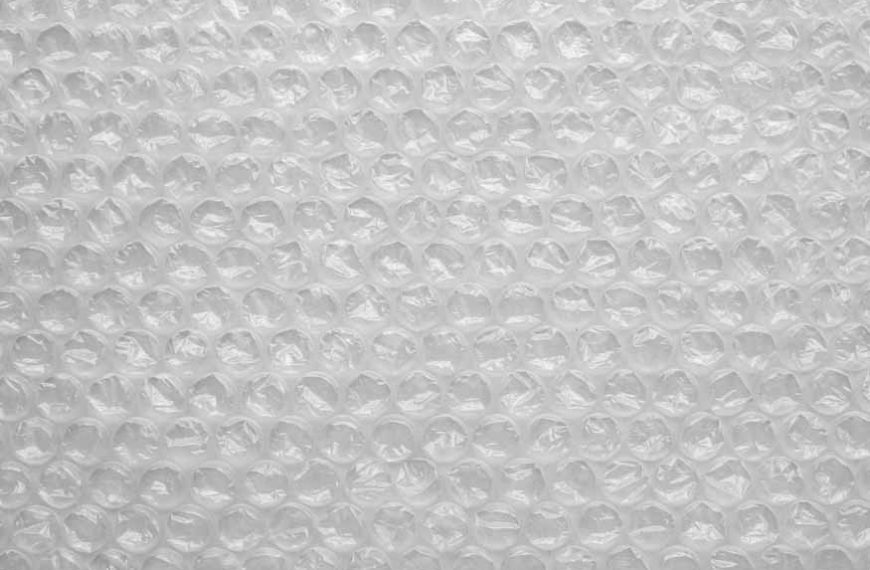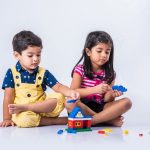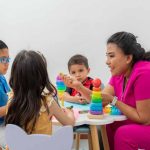The world of toddlers is a kaleidoscopic universe of curiosity, wonder, and boundless energy. As they progress with their developmental journey, they become explorers, discoverers, and seekers of sensory experiences in toddlerhood. Engaging these young adventurers in activities that stimulate their senses while nurturing their creativity is an art. One such delightfully captivating and versatile material is the bubble wrap. Those tiny, air-filled pockets in plastic have long been known for the delightful popping sound. However, their potential as a tool for sensory play as well as artistic expression, especially among toddlers, is an unexplored treasure trove waiting to be discovered.
In this article about art with bubble wrap for toddlers, let us delve into the world of toddler-tested DIY bubble wrap art, designed not just for amusement but as a catalyst for holistic development. From the mesmerising textures to the splashes of colour, bubble wrap emerges as a dynamic medium that engages multiple senses while nurturing a child’s innate creativity.
For toddlers, the world is a playground of colours, textures, and sounds waiting to be explored. Sensory play forms the basis of their developmental journey, which helps them to make sense of the world around them. Bubble wrap, with its unique tactile sensation and captivating popping sound, becomes a sensory gateway, inviting toddlers into a world of exploration and discovery.
The distinct tactile experience offered by bubble wrap engages their sense of touch, which allows them to explore different textures, sizes, and shapes. As their tiny fingers press against the bubbles, they experience variations in pressure, which aids in their sensory development. The auditory stimulation from the popping sound provides an exciting sensory feedback loop, which captivates their attention and helps with auditory discrimination skills. The visual appeal of the bubble wrap captivates the toddler’s attention and sparks their curiosity. Harnessing all of these sensory elements through art allows a toddler to have a holistic approach to learning and development. Bubble wrap is a fantastic tool in early childhood education and creative expression.
Here is a list of ten bubble wrap art for kids. These activities will provide hours of engagement and entertainment for the kids. Along with cultivating artistic expression, these activities will help in cognitive and motor skills development in the formative years of a child’s life.
- Bubble Wrap Painting:
- Bubble Wrap Stamping:
- Bubble Wrap Collage:
- Bubble Wrap Texture Painting:
- Bubble Wrap Mosaics:
- Bubble Wrap Sculptures:
- Bubble Wrap Sensory Art:
- Bubble Wrap Jewellery:
- Bubble Wrap Mural:
- Bubble Wrap Costumes or Masks:
Cut the bubble wrap into various shapes. It can be cut into circles, squares, animals, stars, literally any shape that the toddler wants to cut it into. Apply paint into the bubble wrap cut-outs using a roller or paint brush. Now, press the painted bubble wrap onto a paper to create unique prints. Voila! Your bubble wrap painting is ready!
There are many bubble wrap painting ideas. But have you heard about bubble wrap stamping, which is a way to create art with bubble wrap? First, attach bubble wrap to cardboard or wooden blocks. Then, dip the bubble wrap side into paint and use it as a stamp. Thai can be done either on paper or fabric to create unique patterns.
Cut bubble wrap into different sizes and shapes. Next, glue the bubble wrap pieces onto a canvas or cardboard to form a collage. Encourage the toddlers to create landscapes, animals, or abstract designs.
This is slightly different from bubble wrap painting but is derived from bubble wrap painting ideas. First, apply paint liberally to a canvas or paper. Then, press bubble wrap onto the wet paint to create textured patterns and designs.
For this, cut bubble wrap into small squares or other regular shapes. Then, use these small pieces to create mosaic-like artwork by arranging them on a surface like a canvas and by gluing them together.
Roll or fold bubble wrap into various shapes. The shapes could be balls, cones, cylinders, etc. Use glue or tape to hold the shapes together in order to create 3D sculptures.
For this, attach a bubble wrap onto a large canvas or board. Encourage toddlers to press, poke, and explore the bubbles with their fingers, hands, or even paint brushes to create sensory-rich art.
Cut bubble wrap into small shapes and punch holes in them to thread pipe cleaners through the holes. Your bubble wrap beads are ready to make necklaces, bracelets, or earrings. These jewellery pieces can also be used to adorn their toys or dolls.
Provide a large sheet or paper or cardboard to your toddler. Let children paint or draw on the bubble wrap with various colours and designs. Once done with their paintings, they can collaborate to create a collective mural.
Cut bubble wrap into shapes suitable for costumes or masks. Help the toddler attach these bubble wrap pieces onto clothing or headbands to create unique wearable art. Alternatively, allow them to create these costumes or masks for their toys or dolls.
The Benefits of Bubble Wrap Art for Kids
The amalgamation of sensory engagement and artistic expression in art with bubble wrap offers a multitude of developmental benefits for toddlers. The sensory stimulation that they receive while playing or creating art with bubble wrap enhances their tactile exploration, which aids in sensory integration and refinement. Activities like painting and stamping helps in obtaining fine motor skills, hand-eye coordination, and dexterity. The freedom to play with colours, shapes, and textures nurtures creativity and self-expression in toddlers. As they engage in these art activities, they develop cognitive skills such as colour recognition, pattern identification, and spatial awareness. The process-oriented nature of art with bubble wrap encourages problem-solving and critical thinking which promotes holistic development in young minds.
In the canvas of a toddler’s world, where every stroke is one of discovery and learning, bubble wrap emerges as an extraordinary tool of artistic medium. Its ability to engage multiple senses while proving scope for creative expression makes it a standout tool in early childhood education and development.
For more information, visit EuroKids, or visit a center nearest to you.















